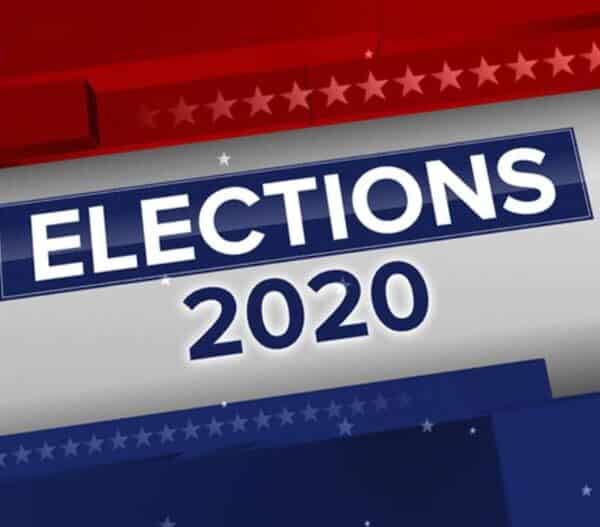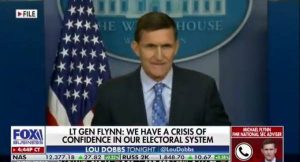President Putin is correct not to congratulate Joe Biden on being elected. There are two reasons. The first is that the complex U.S. election process has not finished; therefore, as Trump has not conceded, there is no “President-elect”. The second reason is that the results may be overthrown by reason of fraud. In which case, Putin will, at the end of the story, look smarter than those who rushed to congratulate Biden before the process was complete.
The hearing in the Pennsylvania Senate and the lawsuits filed in Georgia and Michigan in the last week of November were the first public appearance of the fraud arguments and their supporting evidence – although the alternate media had been on the case from the beginning. Contrary to the utterances of the news media, it was only then that the case was presented in its fullest – the previous legal actions having been only preliminary manoeuvring. The evidence for fraud falls under four heads: eyewitness accounts, improbabilities, statistical analysis and the matter of voting machines and their software. It’s difficult to make up numbers – there are relationships and patterns the fraudster may not know about: better to just make up a final percentage à la the USSR. This piece gives a summary of some of the difficulties with the published results; this piece describes some of the “statistical aberrations”.
Parenthetically, one might observe that the U.S. government declares foreign elections to be fraudulent on a mere fraction of this evidence. Or even, as in the case of Belarus, with no proffered evidence at all: no exit polls, no blurry films; nothing at all.
There are now hundreds, if not thousands, of eyewitness accounts of strange happenings – sudden arrivals of ballots, observers kept away, counting stopped but apparently continuing in secret, suspiciously pristine postal ballots, stacks of ballots with only Biden’s name filled out, Trump votes destroyed, suspicious ballot “curing”, signature problems, backdating postal ballots, wandering USB drives, dead people voting, computer “glitches” sending Trump votes to Biden. Many of these are incorporated into affidavits in the lawsuits and may be read and judged by the public. Many eyewitness accounts, of course, can be dismissed for one valid reason or another, but there are too many now, with more appearing, for casual dismissal.
There are improbabilities in the result. Biden received fewer votes than Clinton or Obama in most areas but many more in the “battleground states”. There were striking exceptions in “down-ballot” voting: in the key states there were large differences between the votes for Biden and for the Democratic Senate candidate. There are cases of historically high – almost Soviet-level – turnouts in key precincts in the “battleground states”. There were improbably high turnouts in nursing homes and in group homes. There are many cases where more votes were cast than voters registered. It was generally a bad day for Democratic candidates: seats were lost in the House and in state legislatures but we are expected to believe that Biden won a strong victory. Despite the spectacular difference in enthusiastic crowds, we’re told that more people turned out for Biden on the day. Perhaps any one of these can be explained but can all of them?
Statistical analysis comprises the next grouping of evidence. We see that votes for Biden, most of the time, and votes for Trump, all of the time, roughly accord with the curve of Benford’s Law. But in those areas where Biden needed the votes, they do not. Violations of Benford’s Law are commonly used by forensic accountants to indicate fraud. An analysis of moving averages over time shows a settled ratio of votes for Biden with a sudden jump in the hours when counting was “stopped”. In some cases votes seem to have been processed faster than physically possible. Other analyses point to suspicious spikes of votes for Biden. A number of statisticians have been attracted to the question and their analyses suggesting fraud are appearing. Again there are too many of these pointers – all of them in the same direction – to be easily dismissed.
Finally there is the whole collection of problems with some voting machines – especially Dominion – and their associated software. The argument is that the machines and software were specifically designed to produce fraudulent results: totals can be changed, votes switched from one candidate to another, incoming vote weighted in favour of one candidate and so on. There are affidavits to this effect. U.S. Embassy cables and previous investigations had shown problems with Dominion machines but, nonetheless, they and the associated software were widely used in 2020. There is possible foreign involvement in these important machines: many parts are made in China; affidavits claim that voting tallies were sent to other countries on the Internet and were massaged there and that passwords into the system were widely available. A computer security expert attests that “hundreds of thousands of votes” were transferred from Trump to Biden by the machines. These issues are attracting computer programmers and hackers and there are now a number of videos on the Internet showing how easily the machines can be hacked.
In summary, the argument is that the machines were programmed to rig the vote in the key states (and perhaps everywhere) by an amount that was thought to be sufficient. But the Trump vote was so much greater than anticipated that the counting had to be “halted” in the “battleground states”; in the “halted” time, ballots were manufactured to compensate. The image of a smooth red curve being overtaken by a blue stepped curve has become the logo of those who believe there were such injections.
This is now quite a large heap of accusations, witness statements and assertions: can these charges be proved in a court (leaving aside the question of whether U.S. courts can be trusted to rule on such a partisan issue – vide General Flynn’s experience)? Or, given the provisions of Article II, Section 1 of the Constitution – “Each State shall appoint, in such Manner as the Legislature thereof may direct, a Number of Electors…” – can sufficient state legislatures be convinced to select Trump-voting Electors? We will find out. But there are certainly too many things to be airily dismissed and there is nothing to suggest that either side will concede until the issue has been fought out to the end.
But, whatever is decided, half the population will be convinced that the election was stolen – indeed a Rasmussen poll in mid-November showed that nearly half the population – including 30% of Democrats! – already believes that “Democrats stole votes or destroyed pro-Trump ballots in several states to ensure that Biden would win”.
2020 has not been a good year for the United States: COVID-19 has wreaked havoc, the economic gains of the past few years have eroded, civil violence and rioting have been common. A disputed election leaving half the population thinking its candidate was cheated out of office will not make things more peaceful. Many are speaking of, if not outright civil war, severe civil strife.
And, in a condition of widespread civil strife and who knows what else, what is the future of the Imperium Americanum? Many pundits will quote Plehve’s alleged remark about the attractiveness of a “little, victorious war” to distract the population. But what little wars are there left? Afghanistan? Iraq? Hardly victorious. It is unlikely that overthrowing Maduro would be very short or, even if it were, that it would distract impassioned American rioters. A war with Iran would be neither little nor victorious. A really severe civil war would divide the U.S. military and bring it home. The consequences of the November 2020 election, whoever winds up in the White House in January, will be long-lasting; the Imperium will have important concerns at home.
What from Moscow’s perspective? The ingathering of American resources to deal with problems in the homeland will be welcomed but the dangers of a nuclear state imploding will not. 2021 may make 2020 look like a blessed haven of stability.



